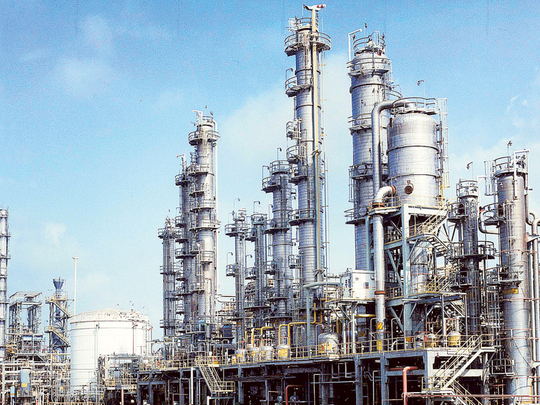
New Delhi: India’s Reliance Industries Ltd plans to invest about $13 billion in energy projects, including a 400,000 barrels per day (bpd) crude refinery at its Jamnagar complex, documents seen by Reuters show.
The refinery would process cheap, heavy crudes that are increasingly available to Asia as the shale boom has cut US demand for the grades.
Reliance, controlled by billionaire Mukesh Ambani, operates the world’s biggest refining complex in India’s western state of Gujarat, where its two adjacent plants can process about 1.4 million bpd of oil.
The company last year sought the approval of the environment ministry to invest 773 billion rupees ($12.8 billion) to build a new refinery and some polymer units, and to switch the fuel for a 450 megawatt power plant from gas to coal, according to a copy of the proposal obtained by Reuters.
The federal environment ministry wrote back in May this year asking Reliance to meet certain conditions in order to secure a green light for the projects, the documents show.
It was not immediately clear if there had been further communications between Reliance and the environment ministry.
The documents did not reference a potential start up date.
Reliance did not respond to an email seeking comments.
“It makes perfect sense to go aggressive in their core business of refining,” said Jagannadham Thunuguntla, head of research and chief strategist at SMC Global Securities Ltd.
“The company’s balance sheet has enough firepower to finance refining and other businesses like telecom and retail.” The company had cash and equivalents of $13.6 billion as of end-June.
FUEL HUB Expanding Jamnagar would strengthen the role of Gujarat — led by Prime Minister Narendra Modi before his landslide general election victory in May — as a global supplier of fuels in addition to meeting rising local demand.
India’s diesel and petrol output may lag demand by about 50 million tonnes by 2025, according to a government panel report, as the world’s fourth largest oil consumer aims to powers its economic expansion through a renewed focus on manufacturing.
Imports were around 320,000 tonnes in the last fiscal year.
Reliance also wants to improve the ability of the Jamnagar complex to produce more value-added ‘light’ products by processing heavier grades than competitors in China and the Middle East.
“Recently the competitiveness of Jamnagar refining hub is gradually declining due to fast changing global scenario of product demand and stringent fuel quality,” said the proposal, obtained under India’s Right to Information Act.
While Reliance has not said by when the proposed projects will be in place, analysts and industry sources said the new refinery is expected to be built by the end of this decade.
Through the new facility, Reliance wants to soak up discounted surplus heavy grades to produce fuels like diesel and improve its refining margins that eased to $8.1/barrel in 2013/14, the lowest level in four years.
“The new refinery will increase Reliance’s appetite for cheap opportunity grades and offer more dollars per barrel of oil processed,” said Praveen Kumar at Singapore-based consultancy FACTS Global Energy.
In its proposal, Reliance said the new refinery will be supported by its five single point moorings — two for product shipments and three for crude intake.
“Reliance has an established infrastructure both locally and overseas to capitalise on opportunities and maximise refining margins. They have a strong trading desk and storage in several parts of the world,” said Ehsaan Ul Haq, senior consultant at UK-based consultancy KBC Process.
“After this recent wave of refinery expansion in Asia and the Middle East, probably we will not see the same growth in refining capacity as we see at present, and this will help them in leaving a stamp over the global fuel markets,” said Haq.












